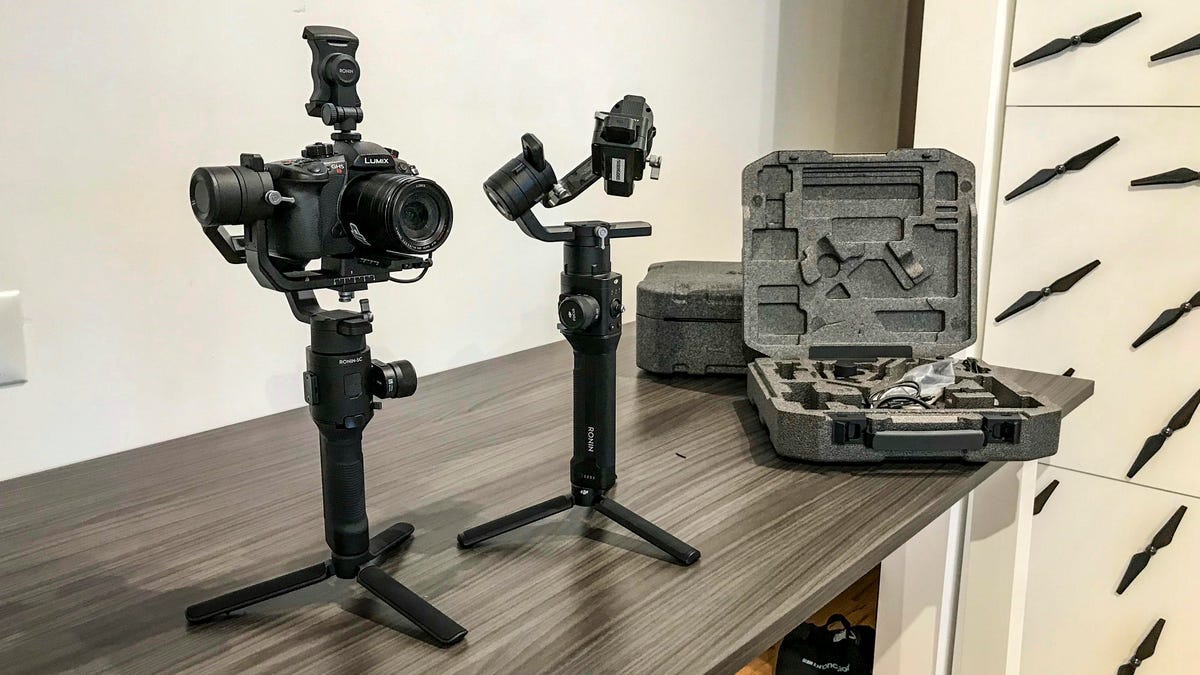DJI Ronin-SC stabilizer is a smooth mover for mirrorless cameras
It's smaller and lighter than the original, but the feature set on this $439 stabilizer is still just as big.

The Ronin-SC (left) is more compact and weighs less than the Ronin-S (right).
Made with mirrorless cameras like the Panasonic Lumix GH5 in mind, DJI's Ronin-SC updates the design of the Ronin-S to make it lighter and more compact without sacrificing features or performance. The single-handed motorized three-axis gimbal weighs 41 percent less at 2.4 pounds (1.1 kg) and will support up to a 4.4-pound payload (2 kg and run for up to 11 hours.
The SC was designed based on feedback from Ronin-S users, said a DJI spokesman. For example, along with its smaller, lighter body, the SC now has locks on the pan, tilt and roll axis of the gimbal to keep it from flipping around during travel. DJI also simplified the setup and balancing process so you can get shooting faster.
The Ronin-SC's mode button lets you quickly switch between three setting profiles.
The Ronin app also got a redesign with a streamlined interface and new shooting and setting options. You can set up up to three setting profiles in the app that can quickly be switched between using a Mode button the Ronin's handle. Options include a popular (and disorienting) 360-degree infinite barrel roll movement that you used to require some menu diving to use. Panoramas, Timelapse and Motionlapse and Motion Control, which lets you preset a movement path with up to 10 different points, have also been added.
A new Force Mobile feature turns your phone into a handheld motion controller for the gimbal and camera. Connect your phone to the Ronin-SC over Bluetooth 5.0 and it syncs with your phone's movement so that whatever way you pan or tilt it, the camera will follow those moves. Using it, it looks and feels like the camera becomes a robotic extension of your arm from up to 82 feet away.
The Ronin app has a virtual joystick that mimics the physical controls on its handle.
The stabilizer also has a new ActiveTrack 3.0 mode that's similar to what's available for DJI's drones and Osmo cameras. Switch to it in the app and you can tap on a subject and have the camera automatically follow them. These modes tend to get tripped up by fast movements, but it seemed reasonably responsive in my brief testing of it.
The Ronin-SC is now available in a Standard package for $439, AU$569 or £325 as well as the Ronin-SC Pro Combo, which adds the focus wheel along with the external focus motor and the Remote Start Stop (RSS) Splitter cable for $539, AU$709 or £415.

